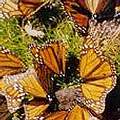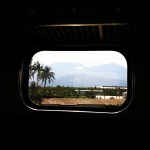 墨西哥的帝王蝶避風港以及越南重要的儒艮棲息地,列入聯合國教科文組織(UNESCO)「人與生物圈計劃」新增的25處保育區之中,此計畫意在將生物圈保留區交由當地社群管理。10月24日至27日在法國巴黎召開的「UNESCO人與生物圈計劃國際協調委員會」,為次項已進行30年的計劃選出25處新的保留區。
墨西哥的帝王蝶避風港以及越南重要的儒艮棲息地,列入聯合國教科文組織(UNESCO)「人與生物圈計劃」新增的25處保育區之中,此計畫意在將生物圈保留區交由當地社群管理。10月24日至27日在法國巴黎召開的「UNESCO人與生物圈計劃國際協調委員會」,為次項已進行30年的計劃選出25處新的保留區。
在上週五(27日)公布的25個新保留區中,18個位於墨西哥,3個在西班牙,也有一個橫跨於西班牙與摩洛哥,委員會並在俄羅斯聯邦、越南與馬拉威各選出一個新址。
在墨西哥米卻阿幹州(Michoacan)設立保留區,鼓勵民眾把為種植玉米而砍伐的帝王蝶棲地森林進行復育。每年10月,上百萬隻帝王蝶從加拿大和美國飛越4000公里,降臨在米卻阿幹森林。跟隨著蝴蝶而來的是大量的遊客,也為當地民眾帶來收入。
此次宣告的越南堅江(Kien Giang)生物保留區,是越南境內最大的環境保護區,涵蓋了超過110萬公頃的土地。富國國家公園位於該保留區內,因其生態系統豐富而成為生態旅遊的重要景點,這裡有超過470種植物、140種野生動物,且沿岸有數種珊瑚礁。越南最大的島嶼富國島,是包含22個大小島嶼群島的一部分。此地許多物種列在IUCN瀕危物種紅皮書中,這是全球動植物保育現況最完備的紀錄清單。
遊客來看居住於加勒比海的瀕絕的丹頂鶴以及海牛的親戚儒艮。聯合國教科文組織認為,如果生態旅遊能夠得到支持,便能為這個區域創造永續的發展,兼顧經濟發展與環境保護。
加入國際協調委員會新增的25個保留區,「人與生物圈保留區」在102個國家中共有507個地點。另外,委員會也同意將4個既有的保留區,進行擴增與變更。
A haven for monarch butterflies in Mexico and prime dugong habitat in Vietnam are among 25 new sites that UNESCO has added to its Man and the Biosphere program, which places biosphere reserves under the stewardship of local communities. The International Coordinating Council of the Man and the Biosphere Programme of UNESCO, meeting from October 24 to 27 in Paris, designated the new sites as part of its 30 year old program.
Of the 25 new Man and the Biosphere, MAB, sites announced on Friday, 18 are located in Mexico. Three are in Spain, including one transboundary reserve straddling Spain and Morocco, and the council designated one new site each in the Russian Federation, in Vietnam and in Malawi.
In places like Michoacana, Mexico, that means encouraging reforestation of traditional monarch butterfly habitat that had been cleared to grow corn. Every October millions of monarch butterflies descend on the Michoacanos forests after a 4,000 kilometer (2,500 mile) trip from Canada and the United States.
Along with the butterflies comes a sizable contingent of tourists, providing income for the local population.
The announcement made the Kien Giang Biosphere Reserve Vietnam's largest area of environmental protection, covering an area of more than 1.1 million hectares, (2.7 million acres). Part of that reserve, Phu Quoc National Park, is becoming an ecotourist destination because of its rich ecosystem with more than 470 species of plants, 140 species of wild animals, and several types of coral reefs offshore. Phu Quoc, the largest island in Vietnam, is also part of an archipelago consisting of 22 islands and islets. Many species here are on the Red List of Threatened Species, the world's most comprehensive inventory of the global conservation status of plant and animal species, compiled by the IUCN-World Conservation Union.
Tourists come to see such rarities as the endangered red-headed crane and the dugong, cousin of the manatee, which inhabits Caribbean waters. UNESCO believes that if ecotourism is encouraged it could contribute to sustainable development in the area, bridging the divide between economic growth and environmental protection.
The 25 new reserves added by the International Coordinating Council brings the total number of MAB reserves to 507 in 102 countries. Extensions or changes to four existing biosphere reserves also were approved.








